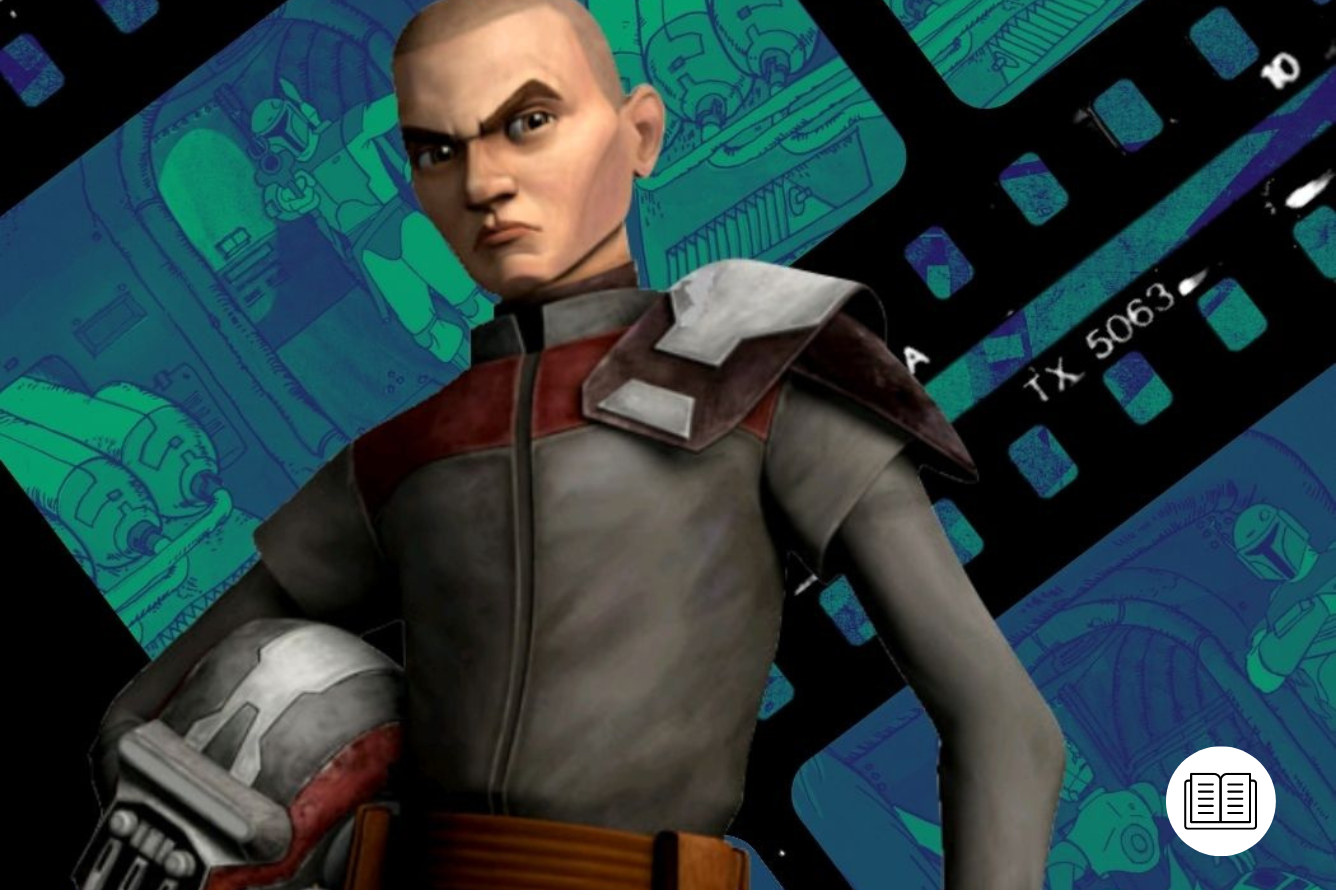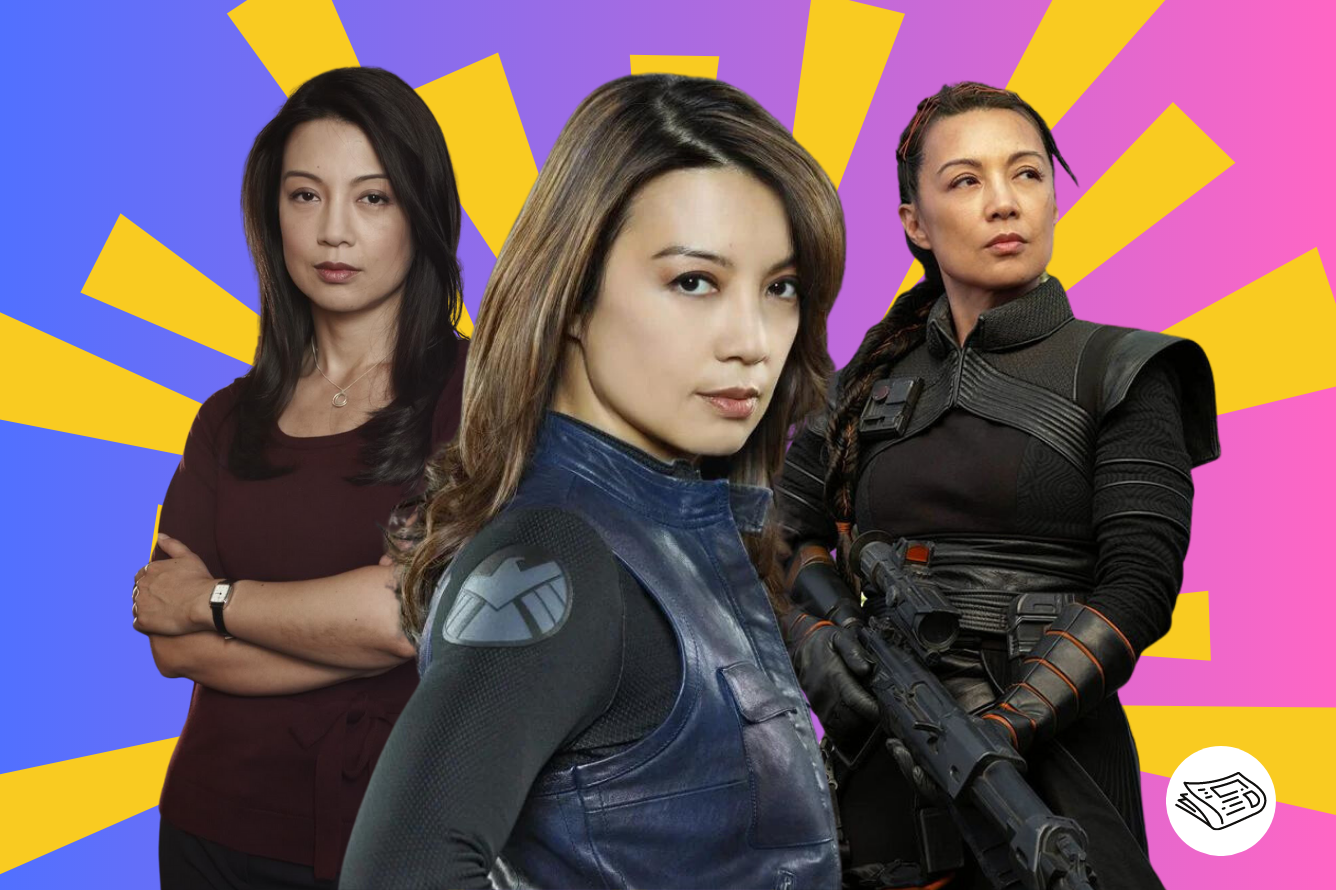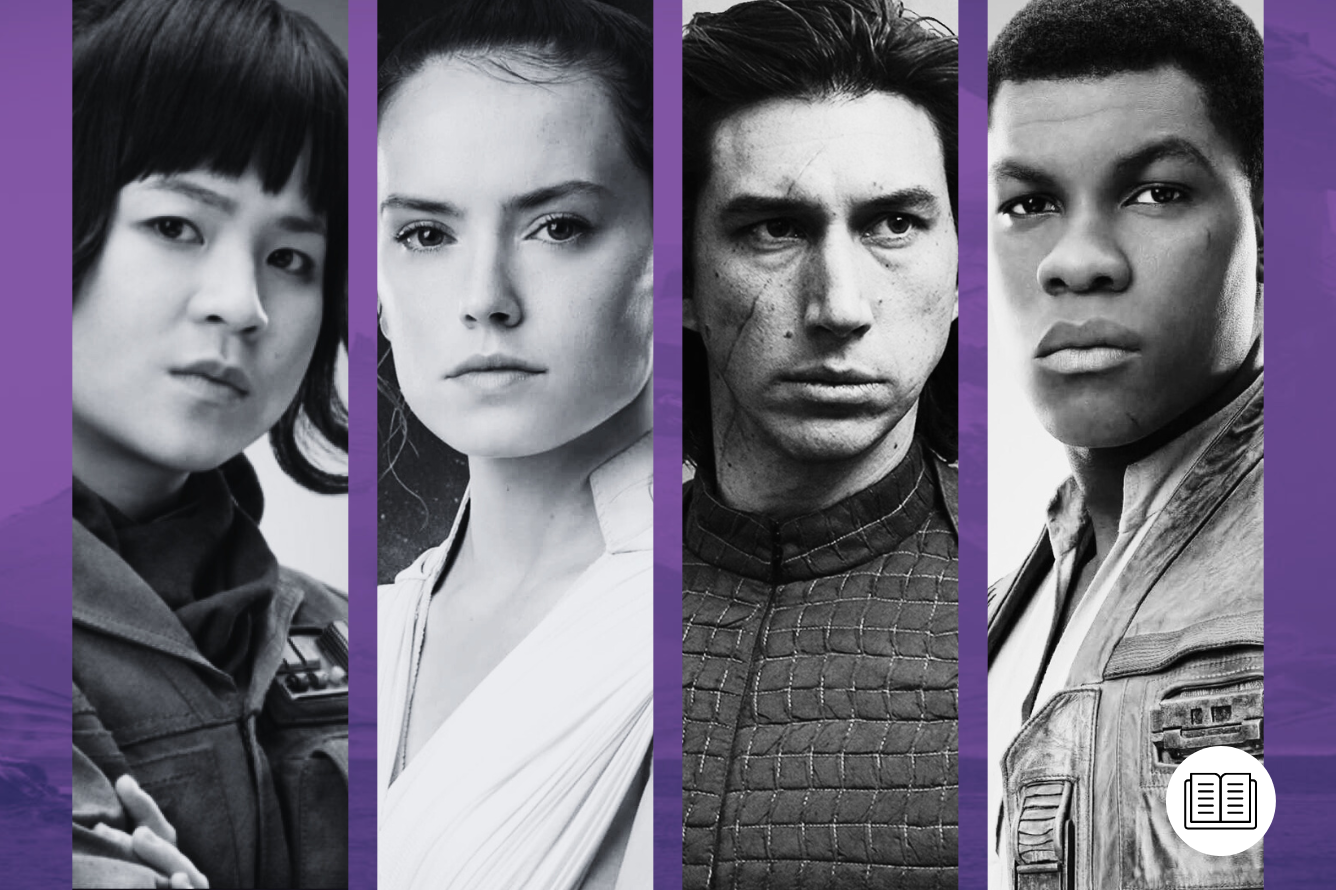Few characters in fiction, sci-fi, fantasy, or otherwise, have achieved the iconic and enigmatic status of Boba Fett. Fett’s ominous look and hard-headed but silent persona immediately captured the public’s imagination from Star Wars: Episode V – The Empire Strikes Back (1980) onwards. Subsequent books, comics, films, and live-action television series have tried to build on this popularity, eventually inscribing Fett with much more personality and backstory than he was ever intended to have outside of his status as an amoral bounty hunter.
With the advent of The Book of Boba Fett, the character will finally take center stage. However, it’s often overlooked that the groundwork for most of these character traits has been done within the Star Wars animated canon. Even if some of these animations are disregarded by the fandom and have largely been retconned, as in the case of 1985’s Droids, these early appearances establish Fett as someone amoral but sympathetic, ruthless but rootable for, and ultimately complex.
Fett’s iconic status may have been constructed on the silver screen, but his personality is cellular.
Boba Fett in the Star Wars Holiday Special
Of course, this goes right back to the screen origins of the Boba Fett character, in the execrable Star Wars Holiday Special (1978). Somehow finding time between Wookie Grandad porn and Bea Arthur comedy sketches to include something of value, the special contains ‘The Story of the Faithful Wookie’, the only Star Wars animated property to utilize the film’s cast within its voiceover, and the first to introduce Boba Fett.
Immediately, Fett (here voiced by the late Don Francks) has more personality than within the series at large, though of course, he is a central character here, rather than an intimidating, peripheral presence. He is quickly introduced as saving Luke and C-3PO from a monster by shocking it with an Amban phase-pulse blaster, a weapon that would be later given iconic status by Din Djarin’s use of it in The Mandalorian, but does so in dead silence, establishing himself as enigmatic and morally dubious. However, he appears to be an ally, consistently addressing Luke as ‘friend’ and suggesting he has ‘no love of the Empire’. Although this is later proved to be a façade to entice Luke into his confidence, Boba’s distrustful relationship with the Empire becomes a consistent element of his character. Fett plays the long game, allying himself with the most powerful (and best paying), but has no direct loyalty for the Empire, largely working with bounty hunters and crime lords, as well as with Darth Vader.

Boba is able to convince Chewbacca to trust him by saying that “Luke trusted me and I’m your only chance of getting out of here alive,” a statement which reinforces the bounty hunter’s difficult position within Star Wars canon: sometimes a friend, sometimes an enemy, his profession is immediately defined as one of grey morality.
Fett is, as he will be in The Empire Strikes Back, working for Vader, who calls him “the best bounty hunter in the galaxy,” and C-3PO speaks of him as “Darth Vader’s right-hand man,” showing his duplicitous nature. Once his plan is revealed, Fett snarkily says to Luke that “we’ll meet again, friend”—a threat to our heroes and a promise to the audience. Thus, from his first appearance, Boba Fett is a threatening, morally ambiguous, and fascinating character, imbued with a more openly pragmatic personality than in his limited live-action appearances.
Boba Fett in Star Wars: Droids
This trend of developing Fett’s personality is further seen in his appearance in Star Wars: Droids. Largely forgotten, especially in comparison to the Extended Universe canon emerging around the same time, the series – which can be found on Disney+ as Star Wars Vintage: Droids – followed the exploits of C-3PO and R2-D2 as they worked for various different masters, before encountering Luke Skywalker in A New Hope (1977). As a result, the series offered the possibility of meeting characters pre-Original Trilogy and expanding the universe outwards, a style that The Clone Wars (2008-2020) would take up 20 years later.
Fett appears in the fourth Droids episode ‘A Race to the Finish’ (S1, Ep4) as the secondary villain to Sise Fromm, who like Jabba the Hutt is a mob boss with incompetent underlings (Tig Fromm and Vlix Oncard, who purposefully undermine Fett for clout). Fett is shown to be playing both sides, threatening Fromm about Jabba having “a reward out for [him]” while reinforcing that the mob boss need have “no fear” as Fett “owe[s] him a favor.” Fett’s pragmatism is again established here, as is the favor-based economy of the Star Wars universe. Favors and bargains have increasingly come to define relationships within the galaxy, as seen in The Mandalorian, and Fett’s acknowledgment of this structure reinforces his sense of honor if not quite of morality.

Fett also inspires fear and awe in Fromm’s underlings (“why are we getting mixed up with that bounty hunter […] they don’t come much worse than him.”), but largely exists as a threat rather than a character, making his first appearance ten minutes into the episode. The cartoon seems to reflect the films’ limiting of Fett’s appearances as such to increase the sense of menace. Indeed, most of Boba’s work here is outsourced to his droid, who manipulates C-3PO into entrapping his master Kea and R2-D2, Fett appearing only to attempt to finish the job.
The bulk of his screentime is within a speeder race, where Tig and Vlix, Thall Joben, and Fett are all competing against one another in order to complete their respective missions. Boba’s ship is filled with contraptions to capture Joben, but they all work against him, leading to a thermal detonator being stuck onto Fett’s ship, disabling it. This, unsurprisingly, annoys Boba (“Your meddling has cost me my droid, my speeder and almost my neck!”) and he decides to hand the Fromm gang over to Jabba for the reward. Droids thus builds on the relationships and character traits established both within the Star Wars films and the Holiday Special appearance, ranging from Fett’s interactions with Jabba the Hutt, to his ultimate pragmatism constantly weighed up against his sense of honor.
Boba Fett in Star Wars: The Clone Wars
However, the true exploration of Boba Fett as a person, rather than a villain, begins in Star Wars: The Clone Wars, in keeping with the series’ general trend to expanding on characters whose personalities were, to be kind, underexplored in the Prequel Trilogy. Canonically only a couple of years after his appearance in Star Wars: Episode II – Attack of the Clones (2002), Boba (voiced by Daniel Logan, who played him in Attack of the Clones) makes his first appearance in Season 2 Clone Wars episode ‘Death Trap’ (S2, Ep20), the first of the closing trilogy of the series, and emphasis is immediately placed on his familial relationships (“Who my father was matters less than my memory of him.”). These are expanded to include his clone brothers, who are a cohesive unit “only as strong as the trooper beside [them],” versus Fett, who was raised as Jango Fett’s son and so holds himself apart from the genetically altered clone cadets.
These tensions place Fett both within and outside of his two lineages, providing an interesting line of identity for the series to pursue. If you hadn’t already registered which clone was actually the youthful Boba, his anger at a cadet who wants to work with Anakin Skywalker and his competence at target practice are included to emphasize that Boba is a conflicted, complex individual.
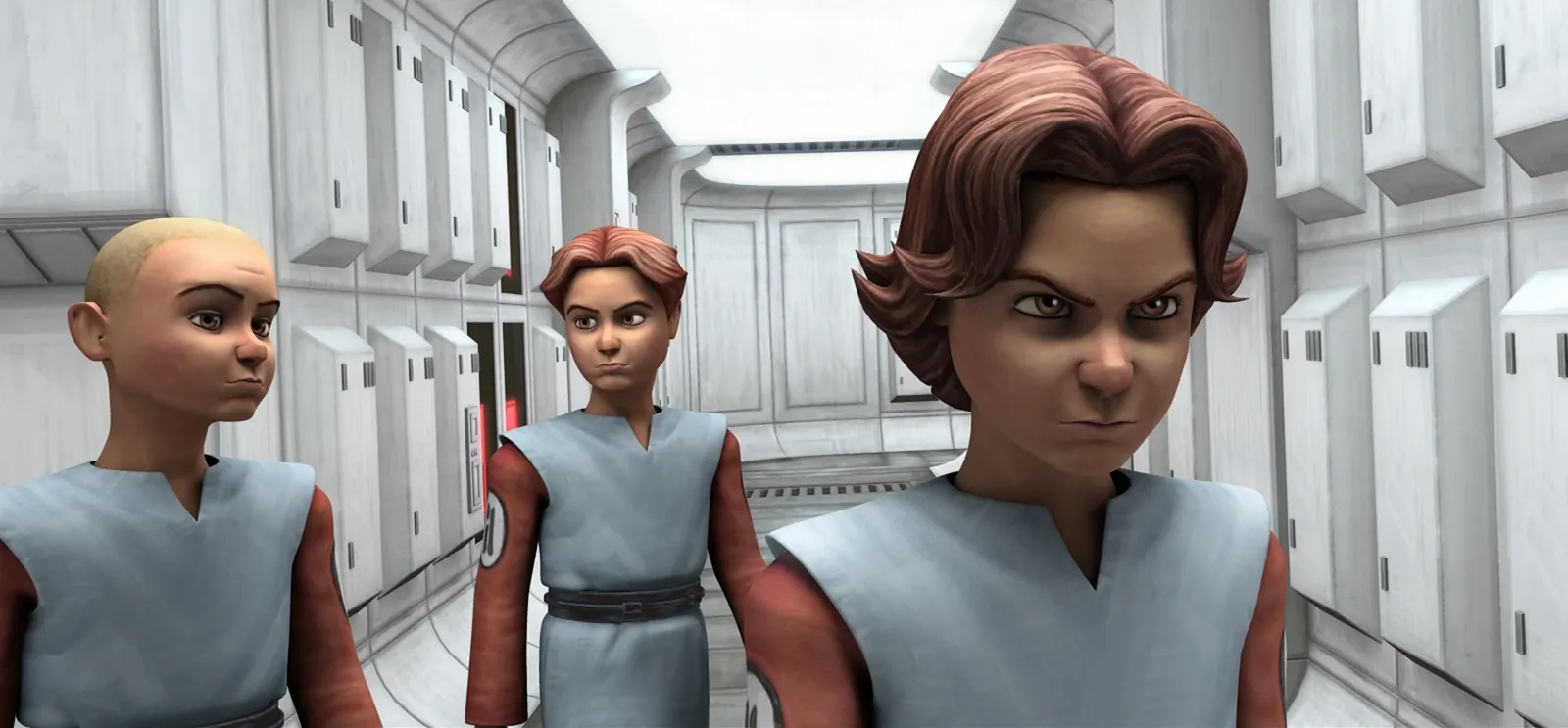
Boba is setting a trap for Mace Windu and working on behalf of Aurra Sing, in vengeance for his father, but still shows some morality, as he questions having to harm the crew – his actions are about “just Mace [sic].” Similarly, Boba angrily denies his relationship with his fellow clones and murders a number of troopers, but says that keeping hostages “was never part of the plan! I just wanted to murder the Jedi that murdered my father,” yet still goes with Aurra Sing. By here adding moral complexity to Boba’s character for the first time, the series encourages the audience to identify more sympathetically with him, whilst giving him a personality beyond glaring menacingly in the corner. He is already at a young age, pragmatic, honorable, conflicted, and a definite threat. The Clone Wars, in the space of one episode, invites us to go and re-evaluate all previous appearances of Fett in light of his youthful trauma.
Fett is further defined by his familial relationship in the following Clone Wars episode, ‘R2 Come Home’ (S2, Ep21), where the opening narration describes him as “son of the notorious bounty hunter Jango Fett” and emphasizes that his mission is to kill “the man who killed his father.” Boba’s semi-official status as a Mandalorian is also referenced, as the discovery of a Mandalorian helmet leads to Windu twigging that Boba is behind the attacks. Boba is completely dedicated to his mission (“I want to make sure he’s dead”), but also emphasises his own role within the project, having “taken all the risks.” This suggests Boba’s honour and sense of righteousness, as he wants justification for his own actions, a good quality for a profit-focused bounty hunter. This does not make Fett popular with the rest of the crew, however, who “would never have let” him “tag-along” as after all he is a precocious, but dangerous, child.
At the end of the episode, there’s a touch of regret as Windu sets out how The Clone Wars views Fett:
“[The helmet] belongs to a bounty hunter I killed on Genosis, Jango Fett […] strangely enough he had a son or at least a clone he regarded as a son… he watched as I killed him.”Mace Windu, Star Wars: The Clone Wars, ‘R2 Come Home’ – S2, Ep21.
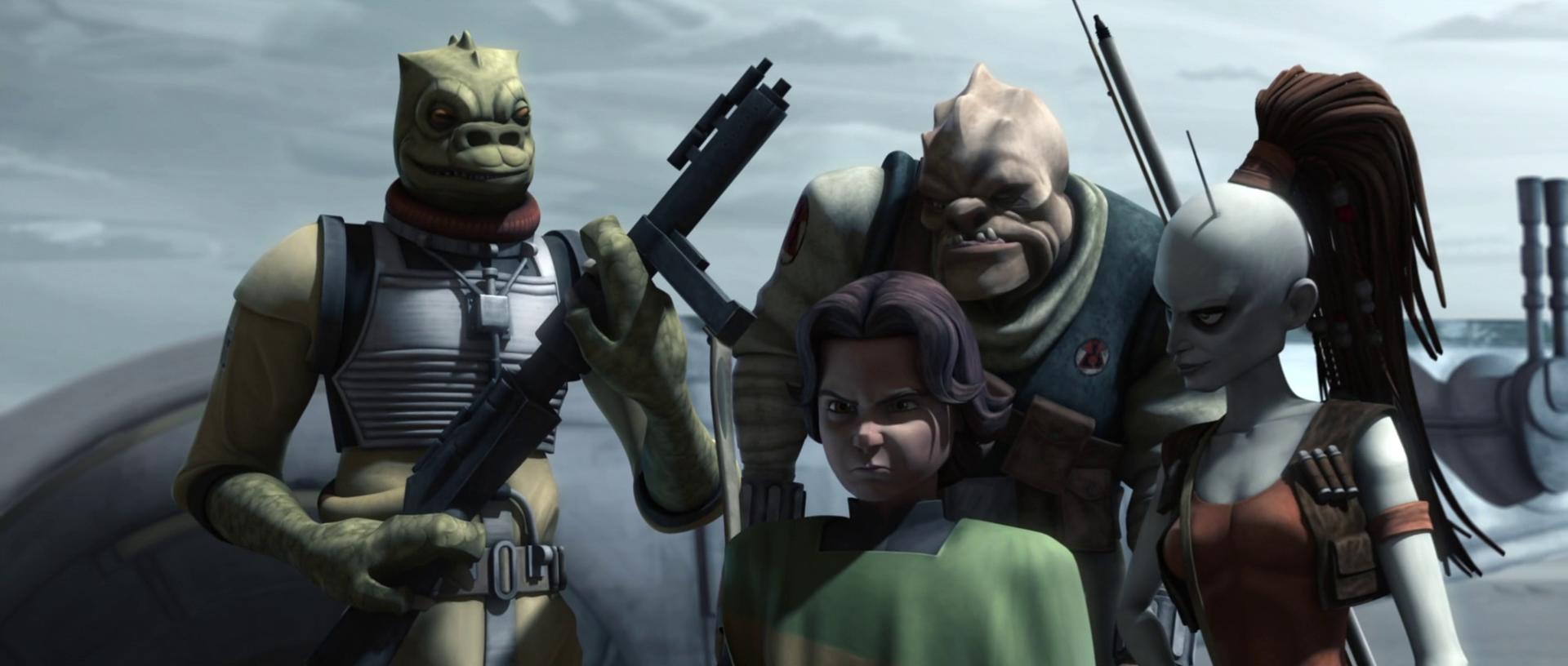
The series so establishes itself as on Boba’s side emotionally, if not practically, while sowing the seeds of Fett’s eventual persona.
These aspects are fully played to the hilt in the Clone Wars episode ‘Lethal Trackdown’ (S2, Ep22), the final episode of the Fett trilogy. The episode firmly sets out its stall in giving Boba Fett emotions, as the opening scrawl says, “Revenge is a confession of pain.” Fett is absolutely on the wrong side of the narrative, having “taken the law into his own hands” and being the mentee of Aurra Sing, but the narration acknowledges that Mace Windu “killed his father,” giving his acts emotional justification and that this “does not sit well with the young vigilante,” allowing Fett his moral ambiguity. Boba tells the captured Admiral Killian that this “isn’t what [he] wanted,” and the Admiral says that:
“You’re not like them. I can tell […] I know a good soldier when I see one.”
The distinction between a soldier and a bounty hunter is probably a subtle one for the audience, but it suggests duty and discipline, characteristics that are soon found wanting in his new family. However, Boba reiterates his individual status (“I’m no clone, not like those two”) while turning away from Killian being beaten – the episode continually emphasizes that whilst Boba is sympathetic, he is not a hero.
This aspect is reinforced as whilst Boba is placed on an equal footing with Aurra Sing in issuing an ultimatum to Windu and Anakin Skywalker, he is criticized by Sing for failing to pull the trigger on one of his fellow clones. Boba’s youth is also restated, as after his father’s death he “found himself in the care of one of Jango’s associates,” and Sing won’t let Boba drink. However, the ultimate goal of the episode is to show Boba’s emotional reasons for his actions: he is “not a murderer” but instead “want[s] justice” and is shocked when Aurra abandons him for her own purposes. It not only reminds us that Boba has a moral code, albeit a harsher one than our heroes, but that he’s still a child in desperate need of parental guidance.
Indeed, Boba then helps the heroes, and even as he is being taken away recognizes:
“I see now I’ve done terrible things, but you started it when you murdered my father.”

Although the episode ends on the side of the law, with Boba being imprisoned and Aurra Sing supposedly killed, it doesn’t feel like a win for our heroes. There’s a sense that the Jedi have as much stake in young Boba’s future as Aurra Sing and her mercenary band – after all, it was Mace Windu who set him off on this path – but he’s ultimately abandoned by both. Windu’s moral absolutism is shown to be just as inflexible and unrelenting as Boba’s, but only one of the two emerges deserving of our sympathy.
The enigmatic Fett of Star Wars: Episode V – The Empire Strikes Back is revealed as a heartbroken, angry, and misguided child with a moral code and sense of honor underlying his actions. But it also shows us the Jedi Order as seen from the galaxy’s many grey areas – that their justice can be found wanting if its subjects do not meet the Jedi’s lofty moral standards and that a justice that discriminates is no justice at all.
The Birth of a Bounty Hunter
Fett’s subsequent animated appearances build on this trajectory, but only very briefly. Boba oddly fades into the background in one of the trilogy’s follow-up episodes, ‘Assassin’ (S3, Ep7) – although the opening narration makes reference to the “attempt on Mace Windu’s life” and includes a clip of ‘Lethal Trackdown’s’ climax, Boba makes no appearance within the narrative, the story focusing on the surprise survival of Aurra Sing. In ‘Deception’ (S4, Ep15), Boba makes a cameo appearance five minutes from the climax of the episode, during Obi-Wan’s undercover stint as bounty hunter Rako Hardeen in a Republic jail.
Boba Fett: “Hey, Hardeen. You owe me something.”
Obi-Wan: “Oh, do I?”
Boba Fett: “You don’t even remember me? That’s very insulting.”
Obi-Wan: “Look, kid, I don’t want any trouble.”
Boba Fett: “You stole a bounty from me, and I want an apology!”
Unnamed prisoner: “Kill him, Hardeen, like the Jedi! Kill him, Hardeen!”
Boba Fett: “What’s wrong, Hardeen? You lose your spine?”
Obi-Wan: “You don’t want to do this.”
Other prisoner: “Kill him!”
Boba Fett, after looking over at Cad Bane, who nods: “Oh, yes, I do.”
This interaction starts a prison riot, which is later revealed to have been instigated by Fett on behalf of Cad Bane, Boba again showing his resourcefulness and pragmatism. It once again underscores the failure of Jedi justice that a child – even one as potentially dangerous as Fett – is incarcerated in an adult prison where any hope of him becoming a “good soldier” is lost as he falls under the influence of the amoral Cad Bane and learns to hold his own amongst the Republic’s scum and villainy.
These appearances also reflect the Star Wars tradition of less-is-more in including Boba Fett: Fett’s appearances have always been restricted to one-episode or cameo roles, in order to prevent the enigma of the character from being exposed and thus losing his attraction for the audience.

Boba’s final animated appearance is in the Clone Wars episode ‘Bounty’ (S4, Ep20), an episode largely focusing on the Dark Side adept Asajj Ventress after her separation from Count Dooku and the beginning of her bounty-hunting career. With this in mind, it’s no narrative surprise that Ventress should encounter an older Fett, who is acting as the boss of the gang Ventress briefly joins and who she immediately dismisses (“I don’t take orders very well, especially from someone of your stature.”). However, this is clearly a Fett who has hardened to a greater extent than his earlier appearance in the season, even down to a shorter haircut, although remaining petulant and learned much of his father’s trade in the process, negotiating cuts and laying down the law to an ex-Sith. We never learn how he was released from prison or his intervening adventures, seemingly to ensure Fett remains enigmatic.
As with most of his other appearances, Boba is working for a crime lord, in this case, Otua Blank, but respects the bounty hunter code and craves structure (“You make the rules, I follow them.”). However, he has clearly developed his fighting skills, holding his own against an onslaught of raiders and having gained a helmet and blasters. Nevertheless he and Ventress battle over his status in regards to his age and profession (she calls him a “novice”, he calls her a “rookie”), and Ventress eventually triumphs, sending Blank Boba in place of his original cargo whilst allowing him to retain his share of the bounty. Here, Fett provides comic relief through his youth and petulance, whilst showing the talent for bounty hunting and hard edge that reflect his future persona.
The animated Boba Fett is the template for the character as we have come to know him in The Mandalorian and The Book of Boba Fett. Rather than an intriguing but inscrutable presence with a slightly silly death, Boba emerges as a troubled, honorable, emotional, pragmatic, and ultimately well-rounded character who can easily hold his own in a series named after him. By restricting his appearances but fleshing out his personality, the animated series has given the audience short sharp shocks into Boba Fett’s life that could provide interesting avenues of exploration for the live-action series.
The modern Boba Fett was born of cell shades of grey let’s see how he handles flesh and blood.
This article was first published on November 19th, 2021, on the original Companion website.
The cost of your membership has allowed us to mentor new writers and allowed us to reflect the diversity of voices within fandom. None of this is possible without you. Thank you. 🙂


